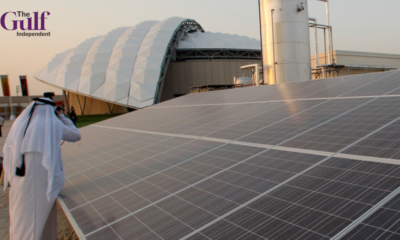As intense heat becomes more frequent and mercury threatens to rise over 50°C, the Middle East will see a sharp rise in heat-related deaths. Nevertheless, even though the region isn’t the best at public health planning, it has a thing or two to teach the world about survival.
In Iraq, when temperatures top record levels, Kholoud al-Amiry, founder of a network for female journalists working on stories concerning climate change, said locals usually get a holiday and are advised to stay inside for safety.
Iraqis are also asked to put bowls of water out under the trees for the animals, she added.
But most people feel as though they’re on their own in a heatwave, al-Amiry continued.
The locals try to adapt – which they do all the time – and confront every challenge extreme weather events throw at them themselves because they don’t have much faith that the government’s support will arrive, she added.
The concerning negligence comes despite the fact that of all the people in the world, those in the Middle East are most vulnerable to extreme temperatures.
Heat-related Deaths Set To Rise
New research published in Nature Sustainability in May tried mapping out the impact of extreme heat across the globe, should temperatures climb beyond 1.5°C over pre-industrial levels over the next 50 years.
Extreme heat is classified as the average annual temperature being up around 29°C.
The people found most people in the Middle East will encounter extreme heat by the mid-century.
Another study published in The Lancet in April looked at how many more people in the Middle East and North Africa region would face heat-related deaths if the planet continues to warm.
It said the annual number would likely rise from an average of about two such deaths in every 100,000 people to about 123 per 100,000 in the last 20 years of the century.
That means by 2100, Iraq will likely see roughly 138,000 heat-related deaths every year.
City Dwellers and Elderly People at Greater Risk
The Lancet study also highlighted the impact demographics and increased migration of people into cities will have on heat-related casualties.
By the 2050s, almost 70% of the population in the Middle East will likely be living in the cities, and by the end of the century, older citizens are expected to outnumber the young.
ALSO READ: Expecting the Unexpected: Navigating Uncertainty in the Global Economy
This could pose an incredibly challenging situation in the future as older people are more physically vulnerable and big cities tend to be hotter owing to the ‘urban heat island‘ effect. In fact, compared to the countryside, cities can be anywhere between 2°C and 9°C warmer.
Governments need to have a clear course of action to bring greater awareness among the locals, increase preparedness and boost resilience, Eleni Myrivili, the global chief head officer for UN-Habitat, told DW.


















